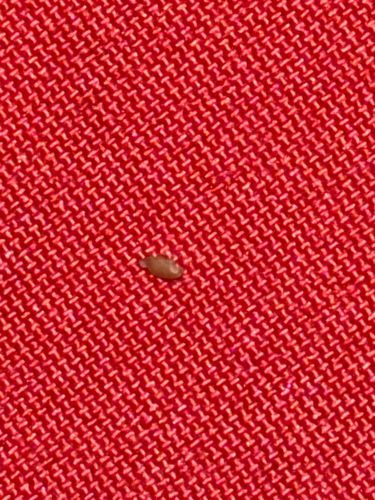Bed Bug (Nymph/Juvenile)
Scientific Name: Cimex lectularius
Order & Family: Hemiptera (Order); Cimicidae (Family)
Size: Nymphs can range from 1 mm (first instar) to 4-5 mm (fifth instar) before becoming adults. Adults are typically 4-5 mm long.

Natural Habitat
Commonly found in human dwellings, particularly in beds (mattresses, box springs, bed frames), furniture, cracks in walls, and other hidden spots close to where hosts sleep.
Diet & Feeding
Exclusively feeds on blood, primarily from humans, but can also feed on other warm-blooded animals if humans are not available.
Behavior Patterns
Bed bug nymphs molt five times before reaching maturity, requiring a blood meal between each molt. They are primarily nocturnal, feeding on sleeping hosts. They tend to hide in cracks and crevices during the day.
Risks & Benefits
Potential risks include itchy red welts from bites, allergic reactions in some individuals, and secondary skin infections from scratching. They do not transmit diseases in the same way mosquitoes do, but can cause significant distress due to their presence. There are no known benefits to humans or the ecosystem.
Identified on: 8/29/2025